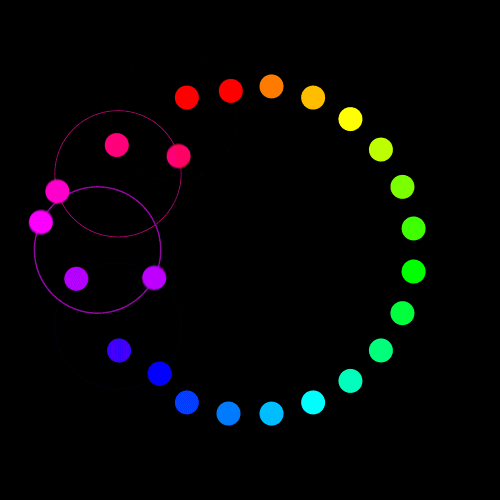
微信扫一扫,移动浏览光盘
简介
本书是一本C++编程方面的优秀教材,全面介绍了面向对象编程的原理和方法,详细分析了与C++编程有关的技术,具体包括类与对象、控制语句、函数与递归、数组、指针、运算符重载、继承、多态、模板、流输入/输出、异常处理、文件处理、搜索与排序、数据结构、标准模板库等内容,本书的同步学习网站上还包含了更多的扩展内容。全书以“活代码”方式详细分析了每个知识要点,是初学者和中高级程序员学习C++编程的理想用书。
目录
Contents
Chapter 1 Introduction to Computers and C++
1.1 Introduction
1.2 Computers: Hardware and Software
1.3 Data Hierarchy
1.4 Computer Organization
1.5 Machine Languages,Assembly Languages and High-Level Languages
1.6 Introduction to Object Technology
1.7 Operating Systems
1.8 Programming Languages
1.9 C++ and a Typical C++ Development Environment
1.10 Test-Driving a C++ Application
1.11 Web 2.0: Going Social
1.12 Software Technologies
1.13 Future of C++: TR1,the New C++ Standard and the Open Source Boost Libraries
1.14 Keeping Up-to-Date with Information Technologies
1.15 Wrap-Up
Chapter 2 Introduction to C++ Programming
2.1 Introduction
2.2 First Program in C++: Printing a Line of Text
2.3 Modifying Our First C++ Program
2.4 Another C++ Program: Adding Integers
2.5 Memory Concepts
2.6 Arithmetic
2.7 Decision Making: Equality and Relational Operators
2.8 Wrap-Up
Chapter 3 Introduction to Classes,Objects and Strings
3.1 Introduction
3.2 Defining a Class with a Member Function
3.3 Defining a Member Function with a Parameter
3.4 Data Members,set Functions and get Functions
3.5 Initializing Objects with Constructors
3.6 Placing a Class in a Separate File for Reusability
3.7 Separating Interface from Implementation
3.8 Validating Data with set Functions
3.9 Wrap-Up
Chapter 4 Control Statements: Part 1
4.1 Introduction
4.2 Algorithms
4.3 Pseudocode
4.4 Control Structures
4.5 if Selection Statement
4.6 if…else Double-Selection Statement
4.7 while Repetition Statement
4.8 Formulating Algorithms: Counter-Controlled Repetition
4.9 Formulating Algorithms: Sentinel-Controlled Repetition
4.10 Formulating Algorithms: Nested Control Statements
4.11 Assignment Operators
4.12 Increment and Decrement Operators
4.13 Wrap-Up
Chapter 5 Control Statements: Part 2
5.1 Introduction
5.2 Essentials of Counter-Controlled Repetition
5.3 for Repetition Statement
5.4 Examples Using the for Statement
5.5 do…while Repetition Statement
5.6 switch Multiple-Selection Statement
5.7 break and continue Statements
5.8 Logical Operators
5.9 Confusing the Equality (==) and Assignment (=) Operators
5.10 Structured Programming Summary
5.11 Wrap-Up
Chapter 6 Functions and an Introduction to Recursion
6.1 Introduction
6.2 Program Components in C++
6.3 Math Library Functions
6.4 Function Definitions with Multiple Parameters
6.5 Function Prototypes and Argument Coercion
6.6 C++ Standard Library Headers
6.7 Case Study: Random Number Generation
6.8 Case Study: Game of Chance; Introducing enum
6.9 Storage Classes
6.10 Scope Rules
6.11 Function Call Stack and Activation Records
6.12 Functions with Empty Parameter Lists
6.13 Inline Functions
6.14 References and Reference Parameters
6.15 Default Arguments
6.16 Unary Scope Resolution Operator
6.17 Function Overloading
6.18 Function Templates
6.19 Recursion
6.20 Example Using Recursion: Fibonacci Series
6.21 Recursion vs. Iteration
6.22 Wrap-Up
Chapter 7 Arrays and Vectors
7.1 Introduction
7.2 Arrays
7.3 Declaring Arrays
7.4 Examples Using Arrays
7.5 Passing Arrays to Functions
7.6 Case Study: Class GradeBook Using an Array to Store Grades
7.7 Searching Arrays with Linear Search
7.8 Sorting Arrays with Insertion Sort
7.9 Multidimensional Arrays
7.10 Case Study: Class GradeBook Using a Two-Dimensional Array
7.11Introduction to C++ Standard Library Class Template vector
7.12 Wrap-Up
Chapter 8 Pointers
8.1 Introduction
8.2 Pointer Variable Declarations and Initialization
8.3 Pointer Operators
8.4 Pass-by-Reference with Pointers
8.5 Using const with Pointers
8.6 Selection Sort Using Pass-by-Reference
8.7 sizeof Operator
8.8 Pointer Expressions and Pointer Arithmetic
8.9 Relationship Between Pointers and Arrays
8.10 Pointer-Based String Processing
8.11 Arrays of Pointers
8.12 Function Pointers
8.13 Wrap-Up
Chapter 9 Classes: A Deeper Look, Part 1
9.1 Introduction
9.2 Time Class Case Study
9.3 Class Scope and Accessing Class Members
9.4 Separating Interface from Implementation
9.5 Access Functions and Utility Functions
9.6 Time Class Case Study: Constructors with Default Arguments
9.7 Destructors
9.8 When Construct
Chapter 1 Introduction to Computers and C++
1.1 Introduction
1.2 Computers: Hardware and Software
1.3 Data Hierarchy
1.4 Computer Organization
1.5 Machine Languages,Assembly Languages and High-Level Languages
1.6 Introduction to Object Technology
1.7 Operating Systems
1.8 Programming Languages
1.9 C++ and a Typical C++ Development Environment
1.10 Test-Driving a C++ Application
1.11 Web 2.0: Going Social
1.12 Software Technologies
1.13 Future of C++: TR1,the New C++ Standard and the Open Source Boost Libraries
1.14 Keeping Up-to-Date with Information Technologies
1.15 Wrap-Up
Chapter 2 Introduction to C++ Programming
2.1 Introduction
2.2 First Program in C++: Printing a Line of Text
2.3 Modifying Our First C++ Program
2.4 Another C++ Program: Adding Integers
2.5 Memory Concepts
2.6 Arithmetic
2.7 Decision Making: Equality and Relational Operators
2.8 Wrap-Up
Chapter 3 Introduction to Classes,Objects and Strings
3.1 Introduction
3.2 Defining a Class with a Member Function
3.3 Defining a Member Function with a Parameter
3.4 Data Members,set Functions and get Functions
3.5 Initializing Objects with Constructors
3.6 Placing a Class in a Separate File for Reusability
3.7 Separating Interface from Implementation
3.8 Validating Data with set Functions
3.9 Wrap-Up
Chapter 4 Control Statements: Part 1
4.1 Introduction
4.2 Algorithms
4.3 Pseudocode
4.4 Control Structures
4.5 if Selection Statement
4.6 if…else Double-Selection Statement
4.7 while Repetition Statement
4.8 Formulating Algorithms: Counter-Controlled Repetition
4.9 Formulating Algorithms: Sentinel-Controlled Repetition
4.10 Formulating Algorithms: Nested Control Statements
4.11 Assignment Operators
4.12 Increment and Decrement Operators
4.13 Wrap-Up
Chapter 5 Control Statements: Part 2
5.1 Introduction
5.2 Essentials of Counter-Controlled Repetition
5.3 for Repetition Statement
5.4 Examples Using the for Statement
5.5 do…while Repetition Statement
5.6 switch Multiple-Selection Statement
5.7 break and continue Statements
5.8 Logical Operators
5.9 Confusing the Equality (==) and Assignment (=) Operators
5.10 Structured Programming Summary
5.11 Wrap-Up
Chapter 6 Functions and an Introduction to Recursion
6.1 Introduction
6.2 Program Components in C++
6.3 Math Library Functions
6.4 Function Definitions with Multiple Parameters
6.5 Function Prototypes and Argument Coercion
6.6 C++ Standard Library Headers
6.7 Case Study: Random Number Generation
6.8 Case Study: Game of Chance; Introducing enum
6.9 Storage Classes
6.10 Scope Rules
6.11 Function Call Stack and Activation Records
6.12 Functions with Empty Parameter Lists
6.13 Inline Functions
6.14 References and Reference Parameters
6.15 Default Arguments
6.16 Unary Scope Resolution Operator
6.17 Function Overloading
6.18 Function Templates
6.19 Recursion
6.20 Example Using Recursion: Fibonacci Series
6.21 Recursion vs. Iteration
6.22 Wrap-Up
Chapter 7 Arrays and Vectors
7.1 Introduction
7.2 Arrays
7.3 Declaring Arrays
7.4 Examples Using Arrays
7.5 Passing Arrays to Functions
7.6 Case Study: Class GradeBook Using an Array to Store Grades
7.7 Searching Arrays with Linear Search
7.8 Sorting Arrays with Insertion Sort
7.9 Multidimensional Arrays
7.10 Case Study: Class GradeBook Using a Two-Dimensional Array
7.11Introduction to C++ Standard Library Class Template vector
7.12 Wrap-Up
Chapter 8 Pointers
8.1 Introduction
8.2 Pointer Variable Declarations and Initialization
8.3 Pointer Operators
8.4 Pass-by-Reference with Pointers
8.5 Using const with Pointers
8.6 Selection Sort Using Pass-by-Reference
8.7 sizeof Operator
8.8 Pointer Expressions and Pointer Arithmetic
8.9 Relationship Between Pointers and Arrays
8.10 Pointer-Based String Processing
8.11 Arrays of Pointers
8.12 Function Pointers
8.13 Wrap-Up
Chapter 9 Classes: A Deeper Look, Part 1
9.1 Introduction
9.2 Time Class Case Study
9.3 Class Scope and Accessing Class Members
9.4 Separating Interface from Implementation
9.5 Access Functions and Utility Functions
9.6 Time Class Case Study: Constructors with Default Arguments
9.7 Destructors
9.8 When Construct
光盘服务联系方式: 020-38250260 客服QQ:4006604884
云图客服:
用户发送的提问,这种方式就需要有位在线客服来回答用户的问题,这种 就属于对话式的,问题是这种提问是否需要用户登录才能提问
Video Player
×
Audio Player
×
pdf Player
×


